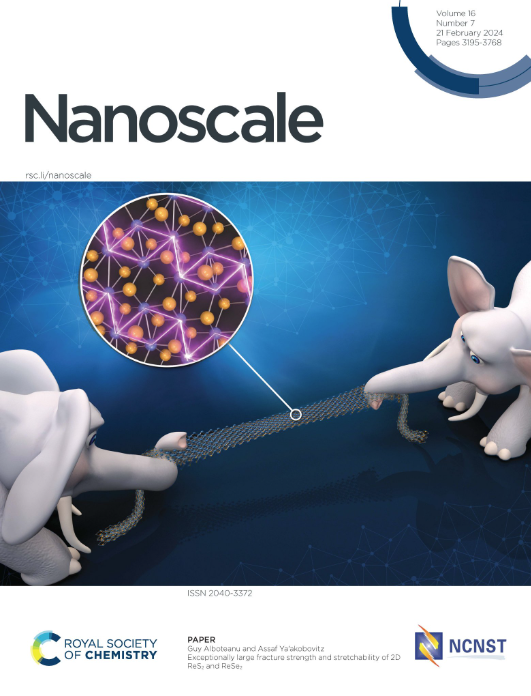Bandgap engineering of lead-free double perovskites for efficient photocatalysis.
IF 5.8
3区 材料科学
Q1 CHEMISTRY, MULTIDISCIPLINARY
引用次数: 0
Abstract
Lead-free halide perovskites represent promising candidates in optoelectronics due to their excellent properties, such as high stability, mobility, defect tolerance and low-cost processes. However, their applications in photovoltaic and photocatalysis are limited by their wide bandgap nature. Here, we introduced Sb3+ and Sb5+ ions into the double perovskite Cs2AgBiCl6, successfully narrowing its bandgap and extending the absorption band edge to 1450 nm, representing the broadest near-infrared (NIR) response reported for lead-free perovskites. Remarkably, the Sb-doped perovskite catalyst exhibits a significantly enhanced photocatalytic hydrogen generation rate. Specifically, Cs2AgBiCl6:0.63% Sb5+ achieves a hydrogen generation rate of 4835.9 μmol g-1 h-1 under 420-780 nm irradiation, which is an order of magnitude improvement over that of pure Cs2AgBiCl6. This material maintains high photocatalytic performance within the NIR range and demonstrates sustained stability over a 16-hour continuous reaction. This study sets the stage for fabricating stable perovskite-based photocatalysts and breaks through the spectral absorption range of halide perovskite materials, and the proposed strategy extends light absorption to activate NIR photoactivity.用于高效光催化的无铅双钙钛矿带隙工程。
无铅卤化物钙钛矿由于其优异的性能,如高稳定性、流动性、缺陷容忍度和低成本的工艺,在光电子学中具有很好的应用前景。然而,它们在光伏和光催化方面的应用受到其宽禁带性质的限制。在此,我们将Sb3+和Sb5+离子引入到双钙钛矿Cs2AgBiCl6中,成功地缩小了其带隙,并将吸收带边缘扩展到1450 nm,代表了报道的无铅钙钛矿最宽的近红外(NIR)响应。值得注意的是,掺硒钙钛矿催化剂的光催化产氢速率显著提高。其中,Cs2AgBiCl6:0.63% Sb5+在420 ~ 780 nm辐照下的产氢率为4835.9 μmol g-1 h-1,比纯Cs2AgBiCl6提高了一个数量级。该材料在近红外光谱范围内保持高的光催化性能,并在16小时的连续反应中表现出持续的稳定性。本研究为制备稳定的钙钛矿基光催化剂奠定了基础,突破了卤化物钙钛矿材料的光谱吸收范围,提出的策略扩展了光吸收以激活近红外光活性。
本文章由计算机程序翻译,如有差异,请以英文原文为准。
求助全文
约1分钟内获得全文
求助全文
来源期刊

Nanoscale
CHEMISTRY, MULTIDISCIPLINARY-NANOSCIENCE & NANOTECHNOLOGY
CiteScore
12.10
自引率
3.00%
发文量
1628
审稿时长
1.6 months
期刊介绍:
Nanoscale is a high-impact international journal, publishing high-quality research across nanoscience and nanotechnology. Nanoscale publishes a full mix of research articles on experimental and theoretical work, including reviews, communications, and full papers.Highly interdisciplinary, this journal appeals to scientists, researchers and professionals interested in nanoscience and nanotechnology, quantum materials and quantum technology, including the areas of physics, chemistry, biology, medicine, materials, energy/environment, information technology, detection science, healthcare and drug discovery, and electronics.
 求助内容:
求助内容: 应助结果提醒方式:
应助结果提醒方式:


